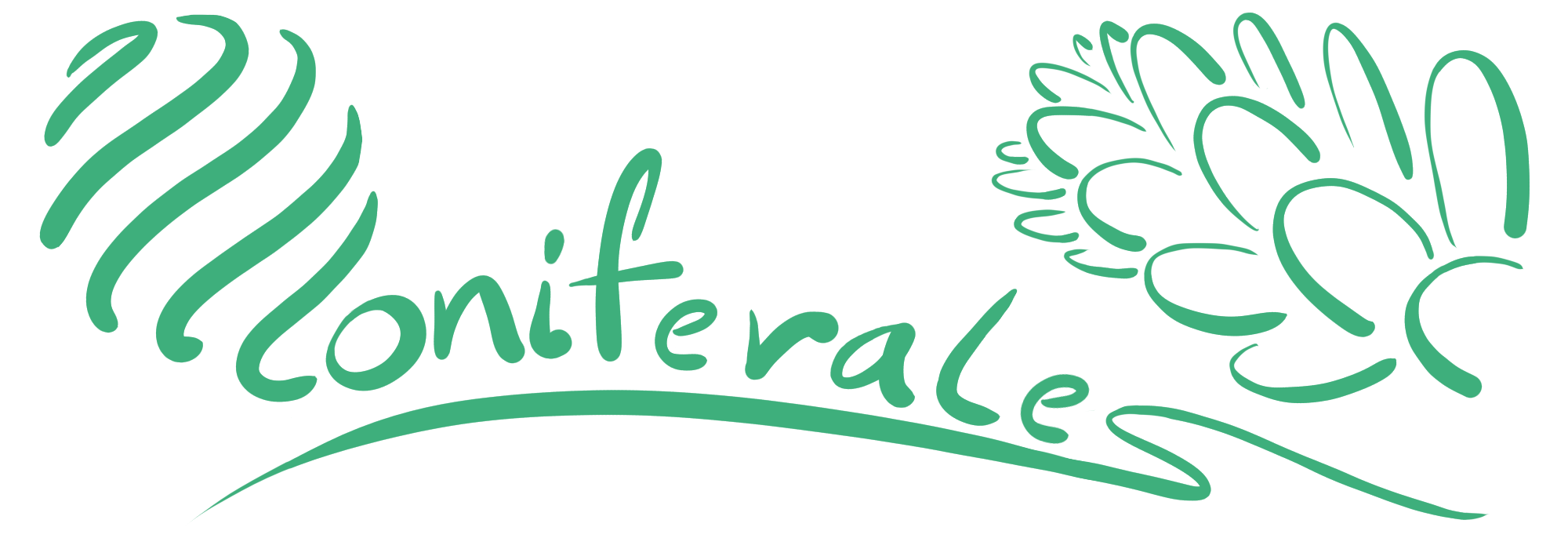Pinaceae Abies nordmanniana ssp. equi-trojani (Asch. & Sint. ex Boiss.) Coode & Cullen
Etymology
Abies refers to ‘to rise’; indicating large trees.
nordmanniana refers to the botanist A. von Nordmann.
equi-trojani refers to the ‘Trojan Horse’.
Colloquial Name
Trojan Horse fir
Description
These trees can grow up to 50 meters tall, with trunks reaching 1.5 to 2 meters in diameter. The trunk is straight and column-like, supporting a broad conical or pyramidal crown. As the trees age, their tops often become flattened. The bark is smooth and grey when young but becomes rough, shallowly fissured, and blackish-grey brown as the tree matures.
The main branches spread outward, with the upper ones angling slightly upward. Smaller branches grow horizontally, though near the top of the tree, they tend to point slightly upward. The smaller twigs are slender and firm, starting out light olive brown or brown. They have noticeable ridges and grooves but lack any fine hairs, making them smooth to the touch. The spots where leaves were previously attached are circular and light-colored.
The buds that produce new growth are small, oval-shaped, and pointed at the tip, measuring about 6 mm long and 5 mm wide. They produce a slight amount of resin. The bud scales are reddish-brown, oval, and pointed, with ridged surfaces and finely cut edges. They stay on the tree for several years. The leaves grow in a spiral pattern along the twigs. On the lower branches, they spread outward like a comb, while on the upper parts, they press forward, covering the shoot. On branches that produce cones, the leaves stand more upright. They are between 2 and 3 cm long and 1.5 to 2.5 mm wide, with a strong twist at the base. The leaves are long and narrow, flattened, and sometimes have slightly rolled edges. The upper surface is glossy dark green, while the underside has two pale greenish-white bands. Their tips are usually notched, but on cone-bearing shoots, they tend to be rounded. Stomata, the tiny openings for gas exchange, are arranged in two bands on the underside, separated by a central ridge.
The pollen cones grow along the sides of the branches, forming dense clusters that dangle downward. They are between 1 and 2 cm long and yellowish in color. The seed cones also grow along the branches but stand upright on short stalks. They are often crowded together and have an elongated oval shape, with a pointed tip that sometimes has small bumps. When young, they are greenish, but as they mature, they turn light brown, with the inside taking on a reddish-brown color. They range from 12 to 16 cm long and 4 to 5.5 cm wide. Once the seeds are released, the central core of the cone remains, forming a narrow, dark brown, cone-shaped structure.
The seed scales are fan-shaped or cup-like, measuring about 1.8 to 2.5 cm long and 2.7 to 4 cm wide in the middle of the cone. Their surface is mostly smooth but may have faint ridges and fine hairs on the exposed parts. The upper edge is usually smooth but sometimes slightly wavy and gently curves inward. The base is attached by a small stalk. The bracts, which are small leaf-like structures behind the seed scales, are spoon-shaped with a notched tip and finely cut edges. They have no distinct midrib, and their pointed extensions are short rather than elongated. These bracts measure 2.7 to 3.5 cm long and slightly stick out from the cone scales before curving backward.
The seeds are wedge-shaped, measuring about 10 to 12 mm long and 7 to 8 mm wide. They have a shiny, warm brown color. The seed wings are also wedge-shaped with rounded edges, measuring 15 to 18 mm in both length and width. They start out light purplish-brown or pinkish but turn a fawn brown color as they mature.
Subordinate Taxa
There exist 2 subordinate taxa for Abies nordmanniana:
Distribution
This map shows botanical records (points) for this taxon. By opening the map’s sidebar (collapsed by default) you can toggle visibility or change the basemap. By clicking on records, you reveal more information.
Habitat
The natural habitats for Abies nordmanniana ssp. equi-trojani are temperate forests. It is naturally found at an elevation of at least 750 up to 1450 metres. Other conifers associated with Abies nordmanniana ssp. equi-trojani are:
USDA Hardiness zone – 6
Abies nordmanniana ssp. equi-trojani is hardy to USDA Zone 6 (Bannister & Neuner, 2001), meaning its frost tolerance lies somewhere in the range of -23.3C (-10F) to -17.8C (0F).
Species Continuity
The population trend for Abies nordmanniana ssp. equi-trojani is decreasing. There are ongoing threats for Abies nordmanniana ssp. equi-trojani and they are listed as follows:
IUCN Category – NT
According to the IUCN Red List, Abies nordmanniana ssp. equi-trojani has been assigned the status of NT(Near Threatened). This means that according to the Red List criteria, this species is not threatened, but is close to having this status.
Superordinate Taxa
The nearest superordinate taxon for Abies nordmanniana is Sect. Abies. The coordinate taxa for Abies nordmanniana are therefore:
Abies nordmanniana ssp. equi-trojani is further placed under Abietoideae. Abies nordmanniana ssp. equi-trojani is also placed under Pinaceae.
This map shows botanical records (points) for this taxon. By opening the map’s sidebar (collapsed by default) you can toggle visibility or change the basemap. By clicking on records, you reveal more information.
Cultivars
‘Archer’, ‘Barney’, ‘Compacta’, ‘Franke’, ‘Fritsche’



Reviews
There are no reviews yet.